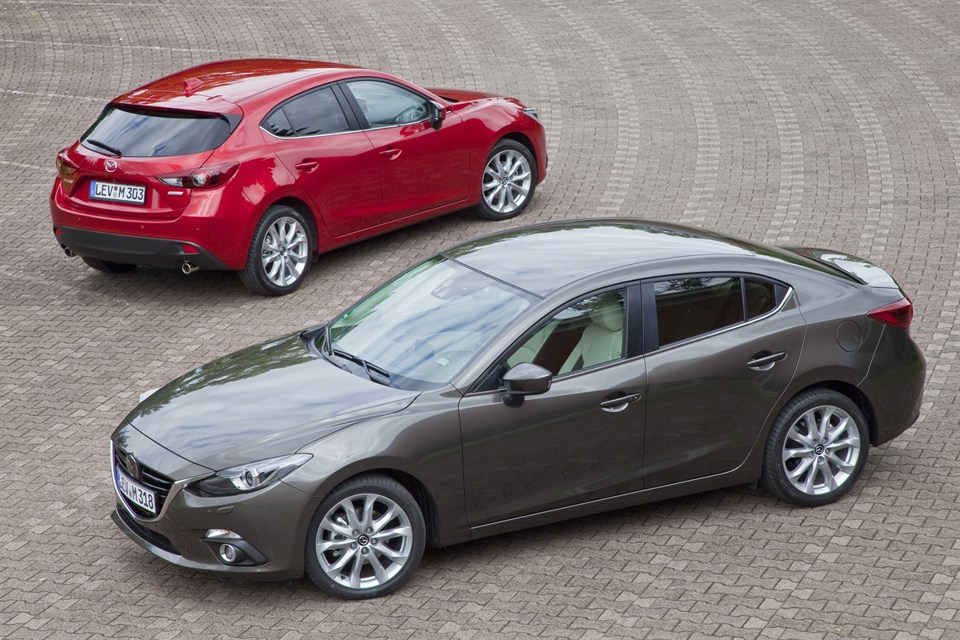When the all-new Mazda3 goes on sale in the UK later this year, the model line-up will once again include two bodystyles - hatchback and a saloon called Fastback.
The new Mazda3 hatchback and saloon share the enlarged 2,700mm wheelbase - the longest in the C-segment and 60mm longer than the current Mazda3's - which allowed designers to shorten the front and rear overhangs.
Both bodystyles are 40mm wider and 15mm lower than the current model, while the saloon features a different roof, rear window, rear wings and boot lid in a design which extends the overall length by 120mm to 4,580mm - compared to 4,460mm for the hatchback.
For improved practicality, both models have rear seat backrests which fold almost flat and the saloon's boot opening width is increased by 100mm to 1,102mm and has a total capacity of 419-litres.

Buyers will be offered a choice of three naturally-aspirated high compression petrol powerplants and one turbocharged diesel - all fitted with i-stop, Mazda's idle-stop system, as standard. The high power Skyactiv-G will also be available in the hatchback with the company's i-Eloop brake energy regeneration system.
The 100bhp Skyactiv-G 1.5-litre petrol engine is a new, efficient petrol engine, delivering up to 56.4mpg (combined cycle) paired with a six-speed manual gearbox. CO2 emissions are from 118g/km - just 9g/km higher than Ford's ultra-efficient 1.0-litre Ecoboost.
More impressive is the 2.0-litre petrol engine, available in standard (120bhp) and high power (165bhp) versions. The standard power Skyactiv-G 2.0-litre is the most economical option combining first-rate fuel efficiency and CO2 emissions - 55.3mpg and 119g/km (manual) and 50.4mpg and 129g/km (automatic).
Fuel consumption (48.7mpg) and CO2 emissions (135g/km) for the high power engine are 14% better than its 2.0-litre MZR DISI i-stop hatchback predecessor, despite generating 10% more horsepower and torque.
The 150bhp Skyactiv-D diesel delivers 280lb-ft of torque at 1,800rpm, is combined with fuel economy and CO2 emissions for the fastback of 72.4mpg and 104g/km (manual), and 58.8mpg and 127g/km (hatchback automatic).


















dave - 15/07/2013 16:55
It is refreshing to see a manufacturer move away from the trend of small engines being turbo charged and full of new technology; instead opting for naturally inspring engines whixch will be far more reliable and give a far more realistic fuel economy. You only need to look at the problems already occuring with the Ford 1.0 ecoboost on the Ford forums and the VAG group TSI engine range which is prone to problems.